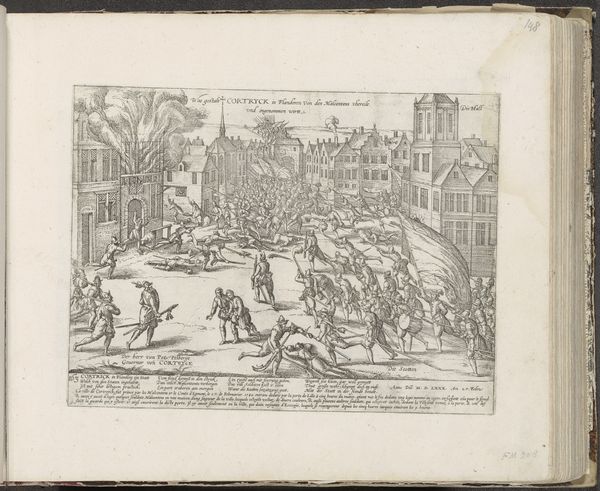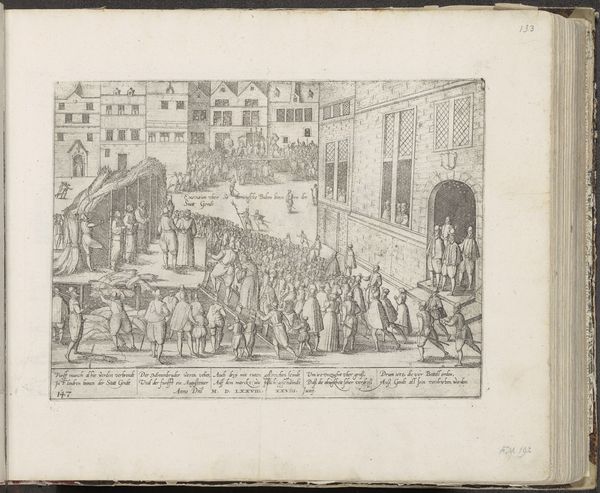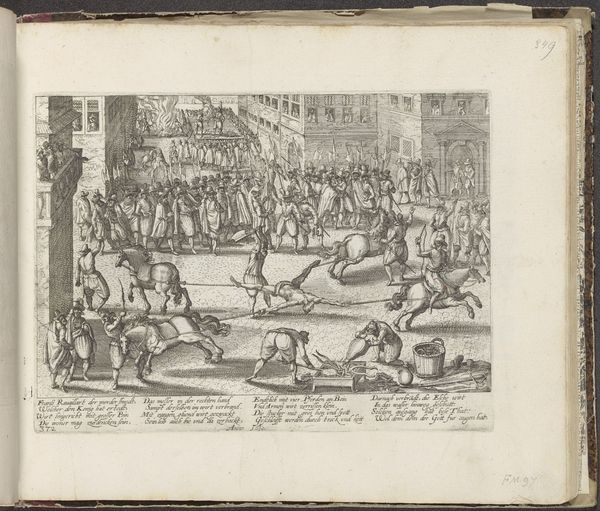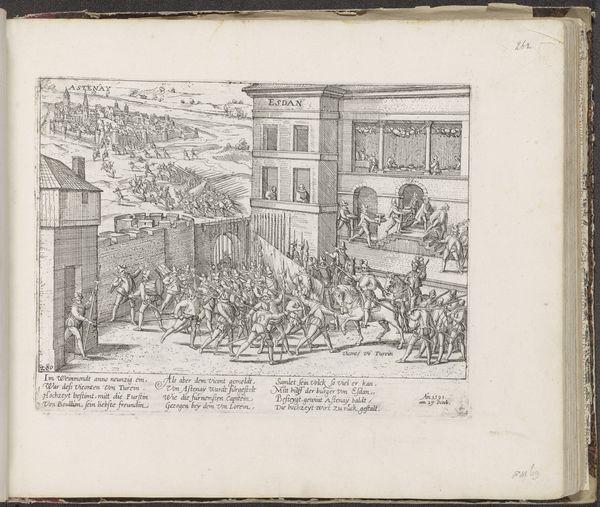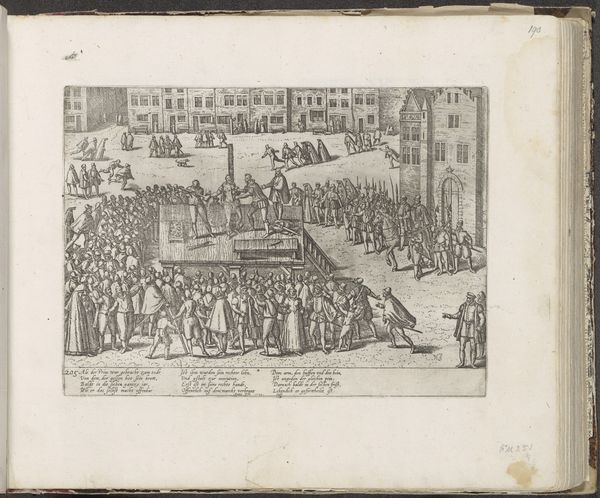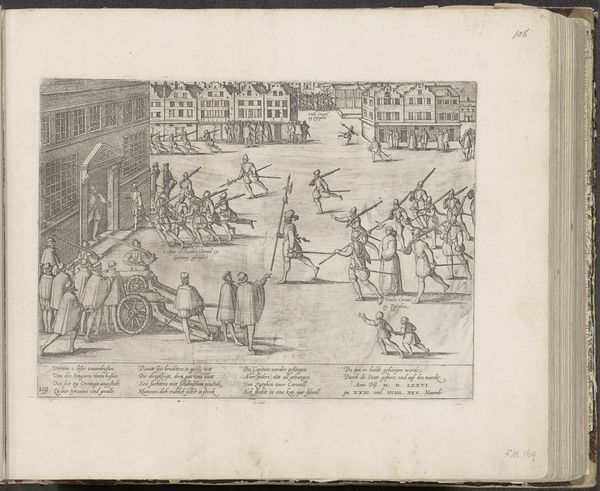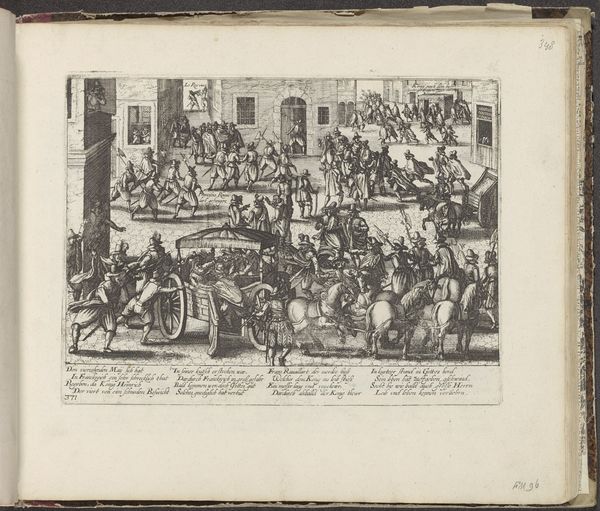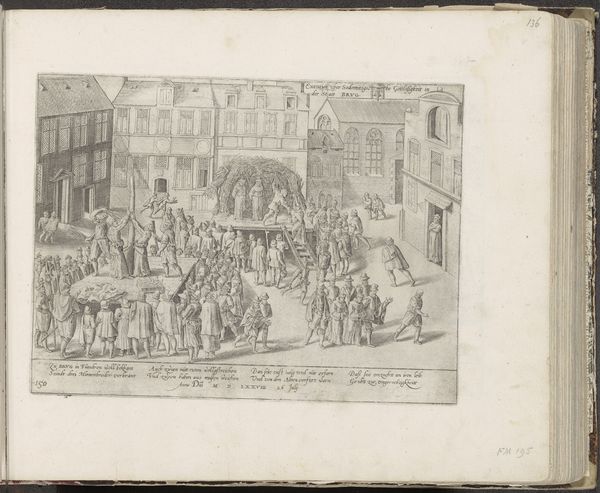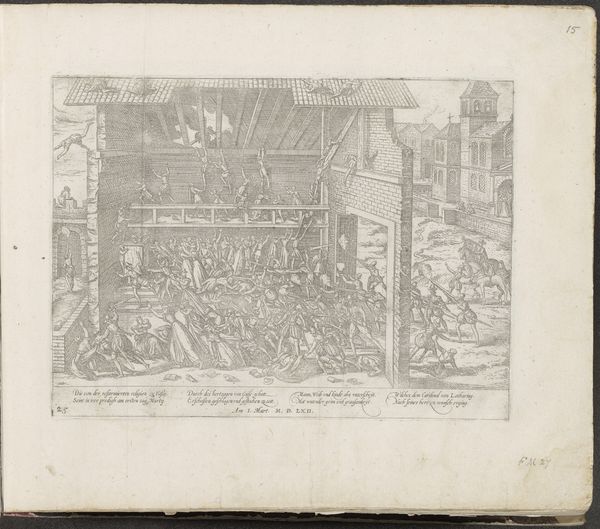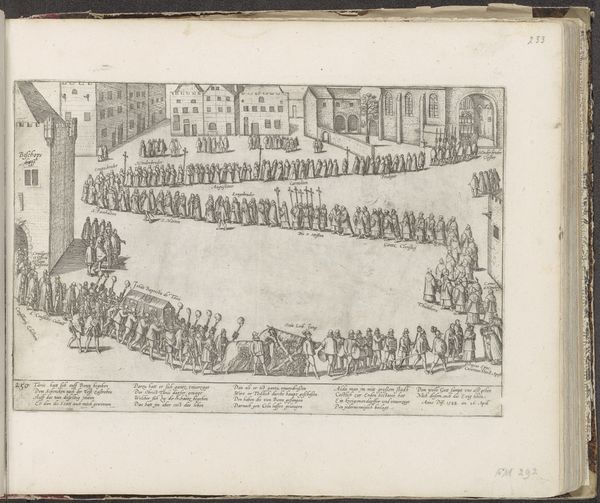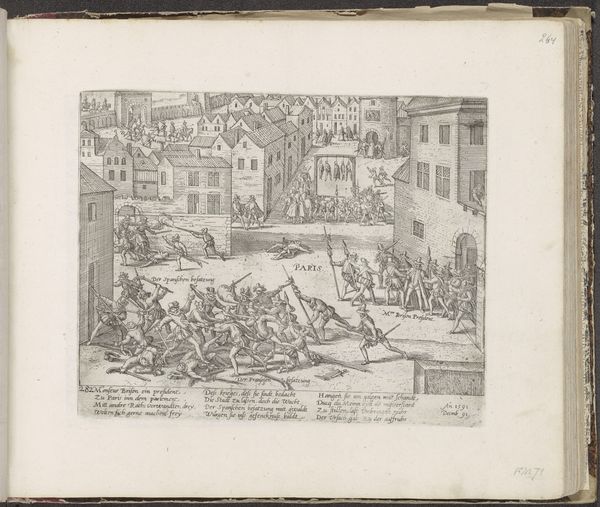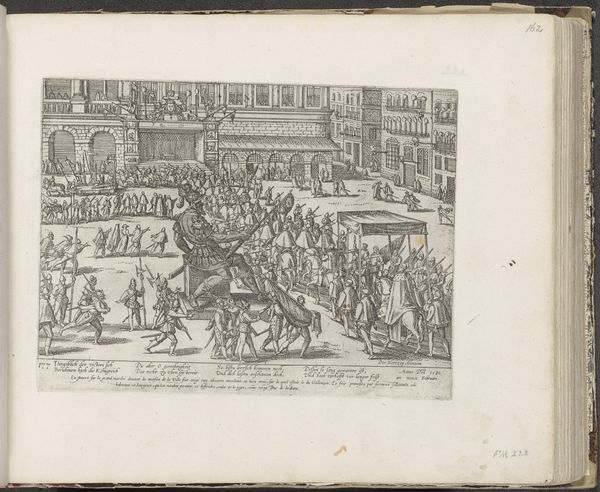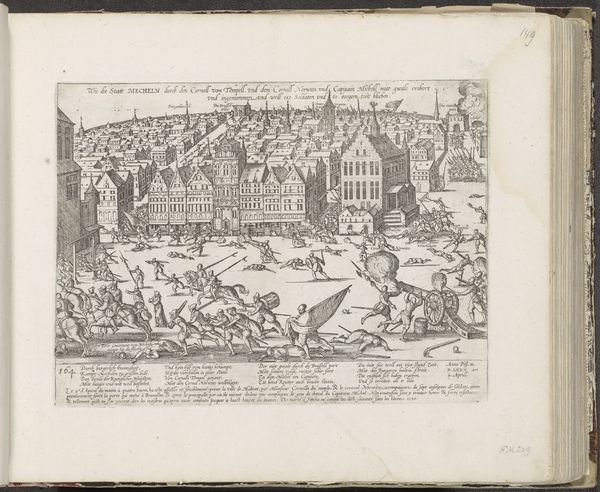
print, engraving
#
narrative-art
# print
#
figuration
#
line
#
cityscape
#
history-painting
#
northern-renaissance
#
engraving
#
realism
Dimensions: height 212 mm, width 278 mm
Copyright: Rijks Museum: Open Domain
This print, "Staatse troep verslagen op de Dam, 1577," was made by Frans Hogenberg around 1577, using the technique of engraving. The character of an engraving lies in the artist's direct manipulation of a metal plate, typically copper. Hogenberg would have used a tool called a burin to carve lines into the surface. The depth and density of these lines determine the tonal range of the final print. Look closely, and you can see how he varied the mark-making to create a sense of depth and movement. Engraving was a laborious process, demanding precision and control. It was a skilled trade. The resulting prints, like this one, were relatively inexpensive to produce in multiples and served as a primary means of disseminating information and propaganda in early modern Europe. The value of Hogenberg's print lies not only in its aesthetic qualities, but also in its function as a historical document, capturing a pivotal moment in the history of Amsterdam. It shows the power of the printed image in shaping public opinion and documenting historical events.
Comments
No comments
Be the first to comment and join the conversation on the ultimate creative platform.
